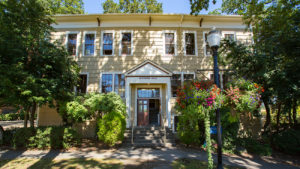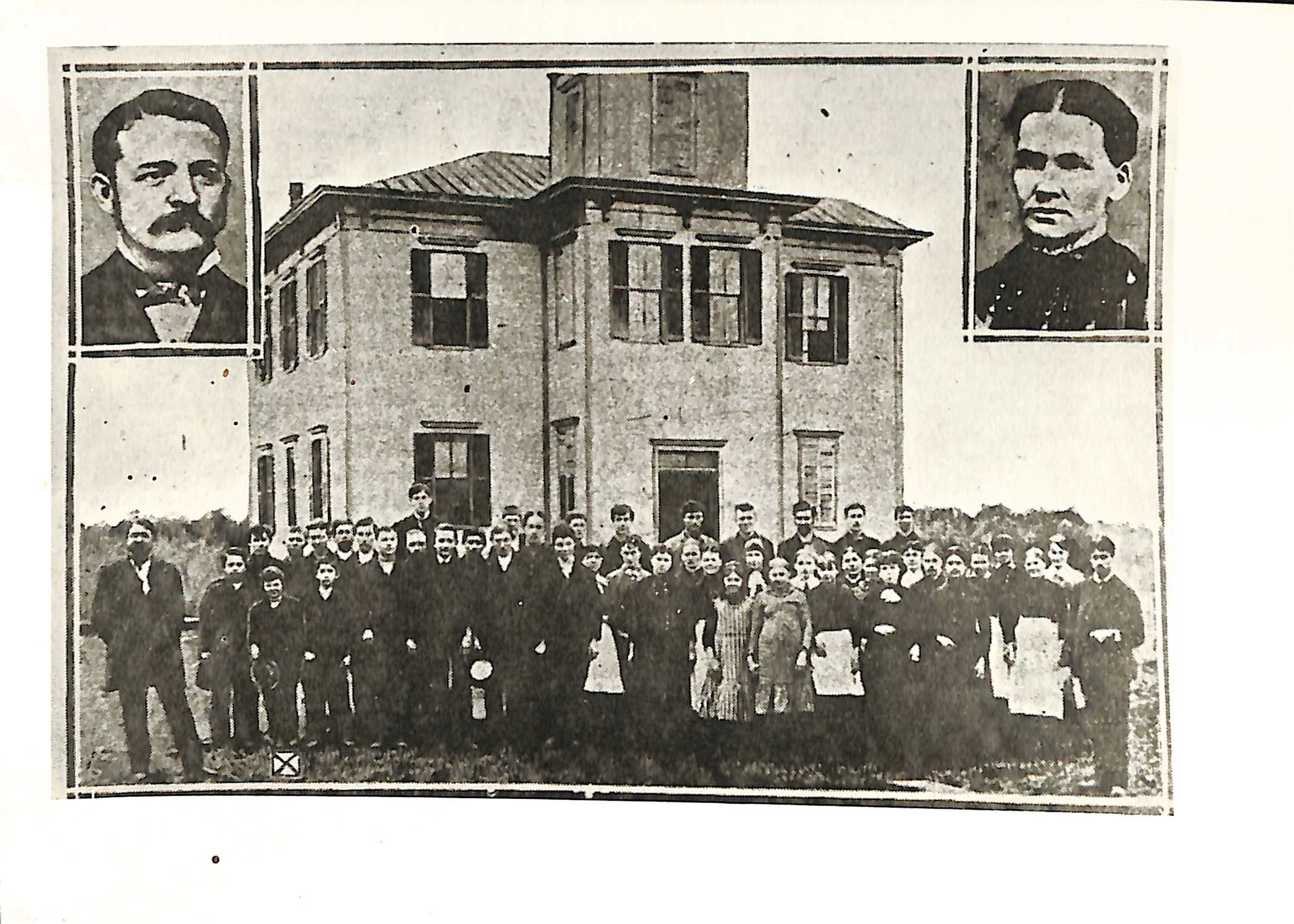Minthorn Hall is named after Henry John Minthorn and his wife, Laura Ellen Minthorn. Henry began his career as a doctor, graduating with honors from Iowa State Medical College in 1874. He later went on to study at both Jefferson Medical College in Philadelphia and another medical college in Cincinnati, earning honors from both. He practiced medicine for a time in West Branch, Iowa, after which he became the personal doctor to the Hoover family. He was young Herbert Hoover’s uncle as well as his doctor, and he saved the boy from a severe attack in his younger years that most thought to be incurable.

The Minthorns moved to Oregon in 1882, when Henry accepted the position of superintendent for the Chemawa Indian School, which was then in Forest Grove. He often passed through Newberg to visit his friend Jesse Edwards, who owned the tract of land upon which the original Friends Pacific Academy was built in 1883. After being introduced to the academy by Edwards, he became the first president/superintendent of Friends Pacific Academy in 1885. The academy’s first class numbered only nineteen students that were taught by three teachers, two of whom were Henry and Laura. Later in his life, Henry served as an administrator with the Bureau of Indian Affairs in Oregon. In 1888 former president Herbert Hoover, lovingly known as “Bert” at the time, attended Friend’s Pacific Academy for a short time before he and his adoptive family, the Minthorns, moved south of Newberg to Salem, OR. Doctor Henry John and Laura Minthorn, Hoover’s maternal uncle and aunt, took him in after the death of his parents, in 1885.

Minthorn Hall was constructed in 1887 after a Friends Temperance meeting established the need for a second building for the growing Friends Pacific Academy. It was originally named simply “Boarding Hall,” as it served as student housing for the academy. As the academy grew and needed more space, the Friends decided to purchase a new tract of land for the school. In 1892, the building was put on logs and rolled, pulled by horses to where it presently resides. At this point, a third story (the daylight basement) was added in order to accommodate a kitchen, dining room, furnace room, and storeroom. It was renamed Kanyon Hall, for the wooded canyon nearby, although the misspelling of the name remains unexplained. Its only purpose at this time was a residence hall, with sixteen girls living on the first floor and twenty boys on the second, with the basement serving as a kitchen and dining room. When Herbert Hoover attended Friends Pacific Academy for a few months, he lived in Kanyon Hall.
In 1936, the building was deemed structurally unsound and in need of either replacement or major repair. In 1939, these repairs were carried out as extensive work was done on the building, including replacing the roof, leveling the floors, replacing all the plumbing, re-plastering the walls, and replacing the flooring. At this time, the entrance of the building was also moved, from the west side of the building (facing Brougher) to the south side (facing the quad), where it is today. In the 1960s, a campaign started to refurbish and update the building once again, this time in order to accommodate the university’s growing teacher education and psychology programs. The projected total cost of the project was $42,000, and builder Laurence Skene, a former professor at George Fox, was in charge of the remodel, with Donald Lindgren hired as the project’s architect. During this remodel, the first floor and part of the basement were converted into classrooms and offices. The updates to the building were completed in 1962, and at its dedication, the building was renamed Minthorn Hall to honor the Minthorns’ connection to the university through Friends Pacific Academy.
In 1975, Minthorn’s original pink exterior paint was updated to green-gold with brown trim, and 1989 the building was repainted again to its current color of light beige and brown. Minthorn’s basement was refurbished in 1989, and the Human Resources Office and the college’s Degree Completion program moved into space. At this point, the upper two levels of the building housed offices for the History, Communication, and Literature Departments. In 1992, for the building’s 106th year, a historical renovation took place which attempted to return some of the architectural elements from the early 1900s. Broken plaster was replaced, Victorian doors were added, moldings were restored, and new carpet was put in. The discovery of gas piping in the ceiling during the renovation inspired the return of gas light fixtures to the building, which was then retrofitted to work with electricity.
Today, at George Fox University, Minthorn Hall is home to multiple departments: English, The Center for Study Abroad, and most recently, the Office of Academic Affairs. It is the only original first generation building still standing on campus and has been listed on the National Register of Historic Places since 1997.